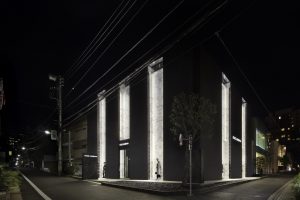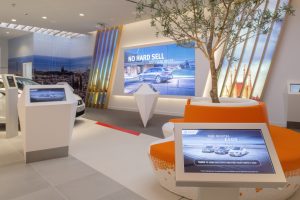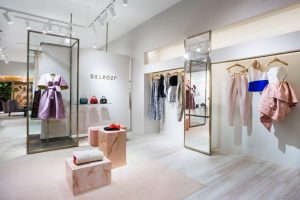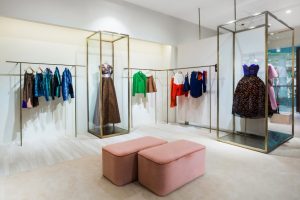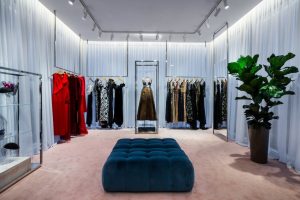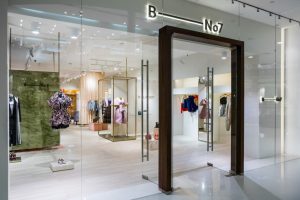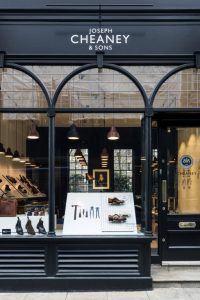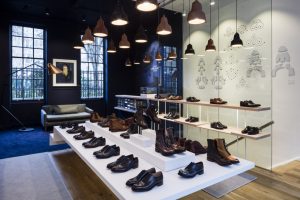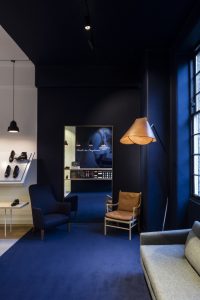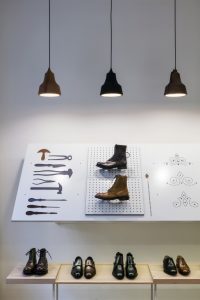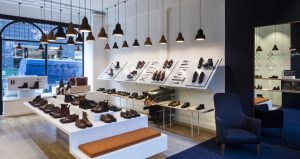To say that worldwide retail is changing is an understatement. It’s morphing into something we wouldn’t have recognized just 10 years ago. According to Deloitte’s (New York) recent study, “Global Powers of Retailing 2017: The art and science of customers,” the global retail community is driven more than ever by catering specifically to the customer, who reportedly seeks “authenticity, newness, convenience and creativity.” These findings are proving accurate with the rise of showrooms and experiential spaces being favored in lieu of traditional stores.
There isn’t one universal trend or theme to point to, however, that defines the international retail sphere. According to Seattle-based Joan Insel, vp of CallisonRTKL (Baltimore), retailers across the globe need to focus on differentiating themselves, and that could translate into a variety of strategic approaches.
“Distinction is important on the local level because we live in a global society, where you can get anything anytime,” she says. “And the human touch is always critical, especially to differentiate from online offerings.”

A DASH OF DOLCE
Despite slow economic growth in Japan due to a decline in the number of workers in the country, Deloitte remains optimistic for retailers, stating in its study, “Japan should be seen as a cash cow in that it is flush with a steady supply of affluent customers who will continue to spend.”
The country’s earnings demographics have precipitated the arrival of luxury brands like Dolce & Gabbana (Milan), which set up shop in Tokyo last September.
Advertisement
“The brief for this project from Domenico Dolce was, ‘Surprise me!’ ” says Gwenael Nicolas, president of Tokyo-based design firm Curiosity Inc.
The roughly 5920-square-foot space his firm created supports a dramatic ambience with dark materials and atypical spotlighted floor displays. Luxe marble, brass accents and gold carpets contrast with the matte black paint that adorns the interior. Located in one of the most fashionable areas of Tokyo – the wealthy Aoyama neighborhood – the store’s unique façade features eye-catching windows that tower approximately 32 feet high.
To create such a bold statement, designers sourced lighting typically used for concerts and fashion shows for the interior. In all, 400 spotlights were used to create various effects. “Lighting was everything,” Nicolas says. “[The challenge was] how to create a space with lighting with the precision of a few millimeters, in constant motion, and [with] carefully choreographed timing.”
According to Nicolas, Tokyo is becoming a place for experimentation, where – much like in the U.S. – customers are demanding engaging physical destinations which provide a sensory experience that may not be easily replicated online.

THE FAST AND THE FULFILLED
When it comes to convenience, the act of car shopping might not immediately come to mind. Yet more digital-physical dealership hybrids are taking root, like Seat UK (Martorell, Spain), which offers customers a physical experience that’s almost as easy as ordering online.
Advertisement
Owned by the Wolfsburg, Germany-based Volks-wagen Group, Seat is the only automobile company that develops, designs and manufactures vehicles in Spain. Recently, the brand has been expanding its reach globally, tapping Green Room Design (Birmingham, U.K.) for its Lakeside Shopping Centre (Grays, U.K.) “dual-retail” outpost, which includes an outdoor “Experience Center” and an interior store concept.
The 1615-square-foot store is a short walk from its Experience Center, an area that houses 16 models ready to be test-driven. The interior sports Mediterranean-inspired colors and an olive tree surrounded by Gaudi-style seating that serves as a lounging spot for tired shoppers.
Customers can research customization options using 22-inch screens that serve as digital info “hubs,” which allow them to browse financing options, book test-drives or configure models. Test-drives can be immediate or scheduled, and at Lakeside, cars are in stock for purchase (delivery is usually one week after buying).
Despite the tech approach, Mike Roberts, chief creative officer, Green Room Design, maintains that the human element in store helps differentiate from the online channel and provides a consumer-controlled experience.
“Customers can easily buy pretty much any product they want online, therefore bricks-and-mortar retail needs to resonate on an emotional level,” he says. “By creating a deeper level of personalized experiences, retailers are finding a new role for the physical store that complements the online experience … Good international retailers are now adopting a truly human-centric approach [for] their store designs.”

Advertisement
RUSSIAN RENNAISANCE
Attempting to speak to the Moscow-based brand Boutique-No.7’s exclusivity, it’s recently renovated outpost conveys the look and feel of an art gallery.
Designed by CuldeSac (Valencia, Spain), B-No.7, as it’s referred to colloquially, is owned and operated by the Muscovite influencer Armida, who had a big impact on the store’s design, according to Pepe García, director, CuldeSac. The firm wanted the space to be reflective of her personality and give customers a feeling of exclusivity, so they created areas like the VIP section that’s highlighted by a backlit frame, and coves where Armida can speak privately with customers.
The space is organized to spotlight collections and featured designers, like Alexander Wang, Christopher Kane, and others, and is sectioned into smaller vignettes throughout. Along with suspended panels and glass display cabinets, pastel colors and luxurious materials, which include brass, steel, velvet and onyx, help elevate the tone. Curtains partition collections, and “mood lighting” mimics museum illumination levels. Customer service is a large piece of the in-store experience, with an emphasis on the shopper’s personal needs and preferences.
“Nowadays, the market is really big, and the world is smaller every day, so as a consequence, we cannot just look to the United States or Canada to discover the best trends,” says García. “The most important thing is to find the real authenticity of brands. That’s the main challenge. The reason … has to be genuine and has to be transferred to the client in a sincere and evocative way.”

CLASSIC COBBLING
If you’re searching for authenticity, look no further than Joseph Cheaney’s (Desborough, U.K.) location on Henrietta Street in London’s Covent Garden.
The store’s 538-square-foot interior, designed by Checkland Kindleysides (Leicester, U.K.), reflects the heritage of shoemaking, while incorporating the surrounding area’s laid-back atmosphere.
A polishing station in one of its tall, arched window bays creates visual intrigue, and customers can opt for a complimentary shoeshine, during which leather footwear is “finger polished” to a mirror-like shine. Large “drawing board” displays, cantilevered and backlit, appear to float while showcasing product collections, as well as silhouetted forms of shoemaker’s tools that tell their brand story.
A prominent portrait of founder Joseph Cheaney, paired with leather lampshades (steamed and shaped at the company’s factory, just like their ladies’ and men’s footwear), emphasize the retailer’s handmade legacy, dating back to 1886.
“Just as the character of each neighborhood where we have opened stores differs, so do our stores,” says William Church, joint managing director, Joseph Cheaney. “Each one has a distinct feel that reflects the area and the profile of customers around it … [Our customers] are equally diverse, but they are unified in their appreciation of the handcrafting and manufacturing skills that go into the making of our footwear, and the store’s design features numerous elements which tell this story.”

ALL TOGETHER NOW
As the global retail industry adapts to a customer-driven economy, stores will continue to respond in kind with more concepts centering on experience, convenience and engaging designs. The customers of today aren’t like the ones we knew even just a few years ago – they demand to be entertained.
“Internationally, the lines have blurred between the retail and leisure sectors,” says Joe Evans, creative director, Checkland Kindleysides. “Retailing has become about social entertainment – facilitating education, inspiration and socialization. Now more than ever, it’s as much about selling the lifestyle of the brand as it is about selling products.”
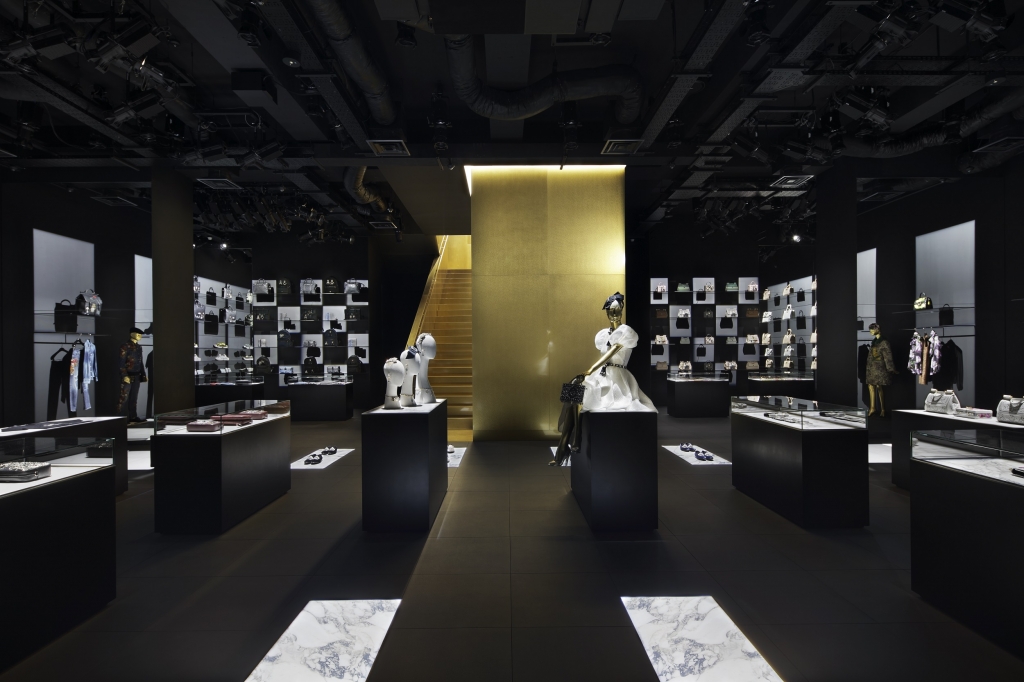

 Photo Gallery3 days ago
Photo Gallery3 days ago
 Headlines1 week ago
Headlines1 week ago
 Sector Spotlight2 weeks ago
Sector Spotlight2 weeks ago
 Headlines1 week ago
Headlines1 week ago
 Headlines4 days ago
Headlines4 days ago
 Headlines2 weeks ago
Headlines2 weeks ago
 Designer Dozen1 week ago
Designer Dozen1 week ago
 Headlines2 days ago
Headlines2 days ago














